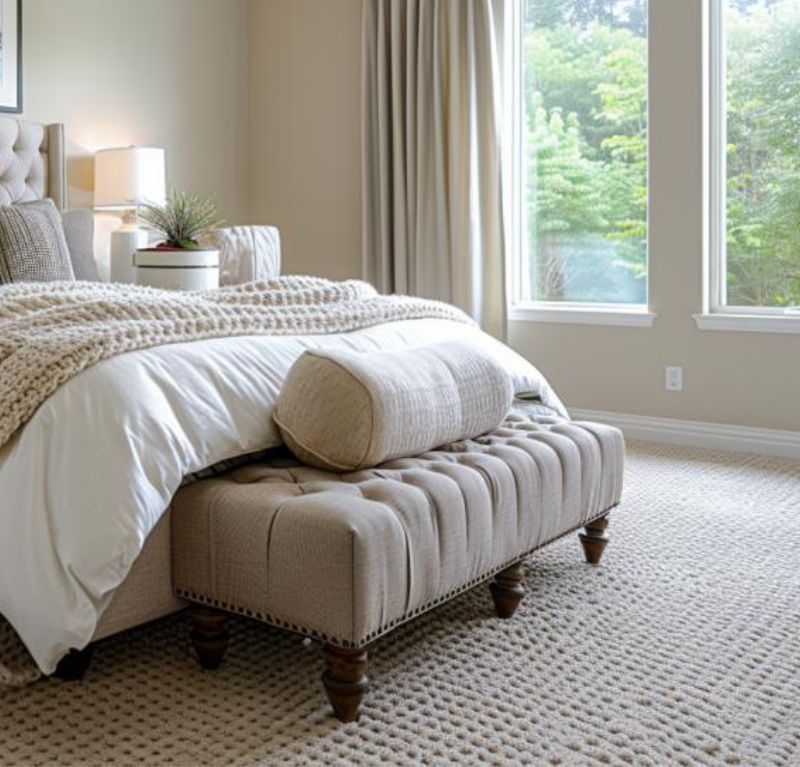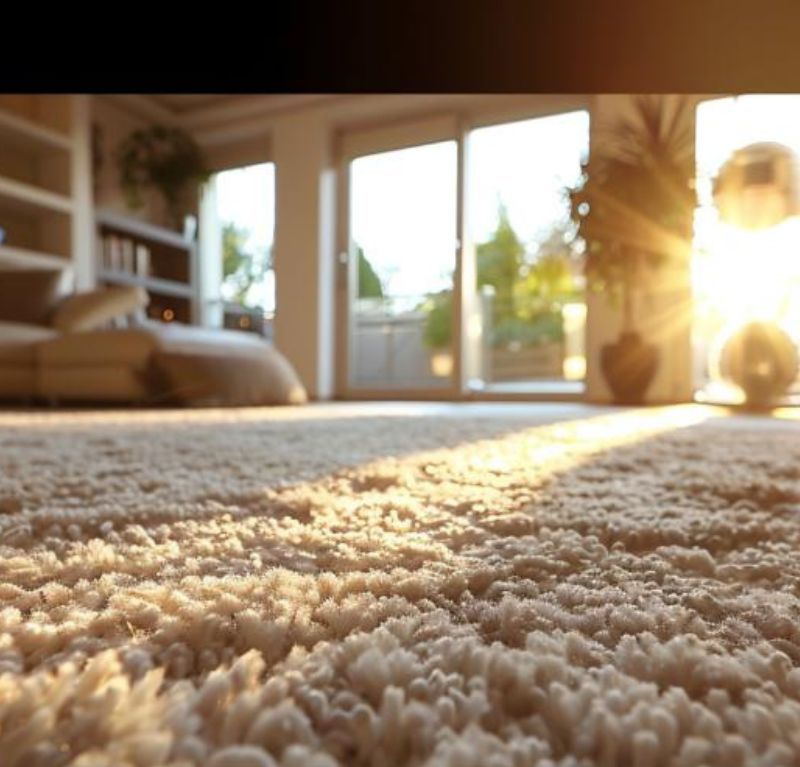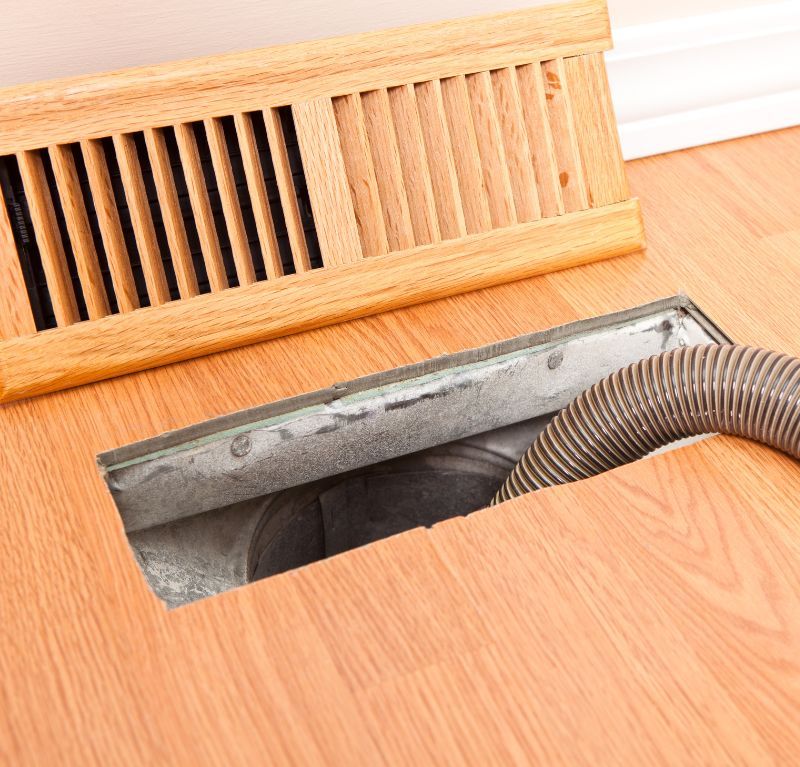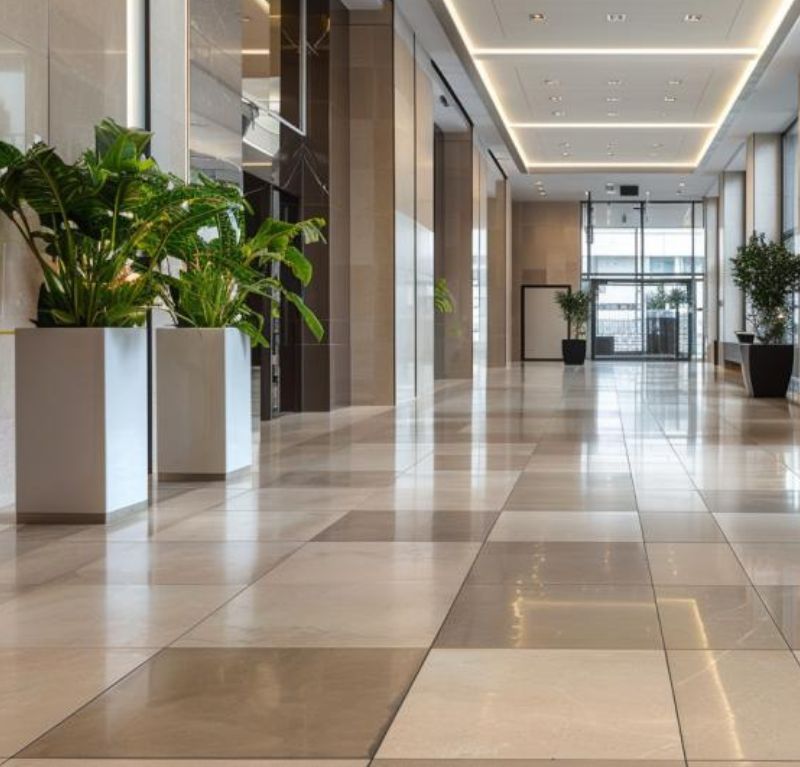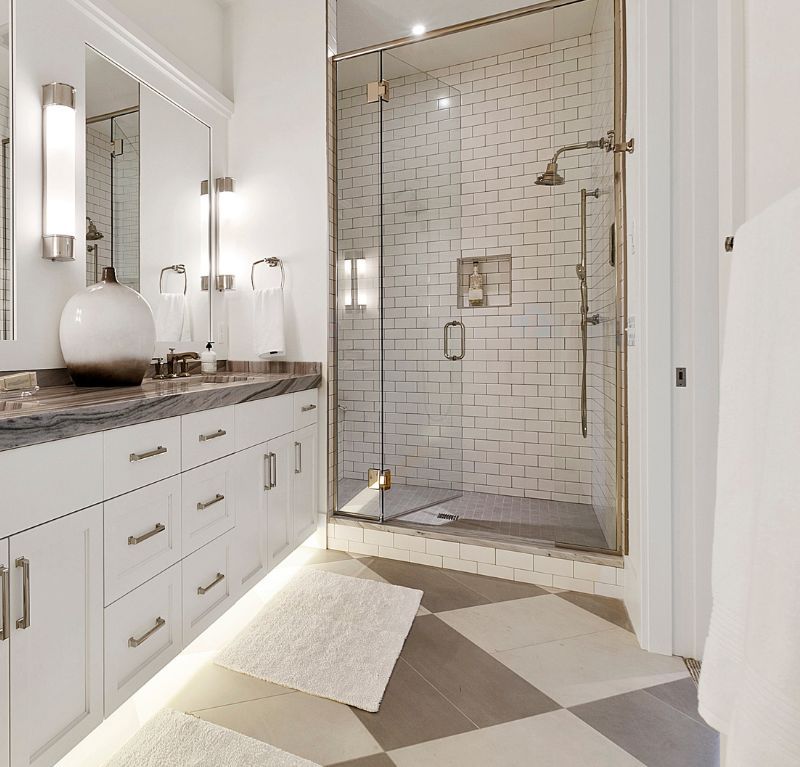Chilling Effects: Preventing Winter Damage on Commercial Hardwood Floors
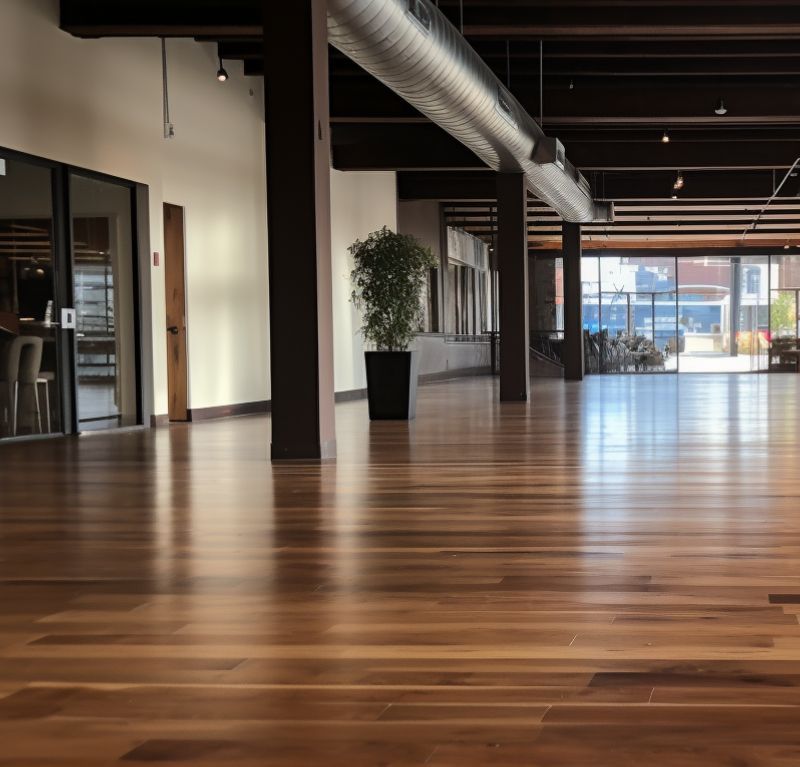
This article will discuss essential floor protection techniques for the cold season, the winter threats to commercial hardwood floors, choosin the right products to shield hardwood, and immediate steps needed to address winter-induced damages. Winter can bring a lot of wear and tears to commercial hardwood floors, no matter how robust and sturdy the hardwood is. Understanding the threats, and knowing the right steps to take to protect your hardwood, can help prevent costly damages.
Winter Threats to Commercial Hardwood Floors
Winter weather can be a serious threat to commercial hardwood floors for a variety of reasons. Cold temperatures can cause the wood to contract and crack, and high humidity can cause the wood to warp. Additionally, the combination of moisture and salt is an even greater threat as salt has the tendency to corrode the wood, causing irreparable damage. Snow and ice can make walking on the hardwood hazardous, creating slip and fall risks that, in a public setting, pose a financial liability.
On the other hand, commercial hardwood floors can be treated or otherwise protected from the hazards of winter, when taken into account at the beginning of a project. Common treatments include applying a coating of polyurethane, a waterproof sealant; or a wax based sealer, designed to weather high humidity levels. Similarly, if a pre-existing floor needs to be refurbished, it may be a good idea to use a polyurethane stripper followed by a sealer.
There are a few simple tricks to consider in order to best protect the commercial hardwood floor during periods of winter. For instance, using smaller mats in high-traffic areas for snow and ice-covered shoes before inviting guests directly onto the floor. Additionally, using adequate heaters can help cut down on the likelihood of humidity-induced warping.
In contrast, some commercial hardwood floors might not even require any extra protection beyond the usual cleaning and maintenance. If the floor is of a higher quality and is already treated, it might withstand the typical winter wear and tear with only a regular clean and buffing.
Finally, it is important to remember that installing the proper ventilation system, as well as regulating the humidity levels can also be invaluable means of protecting the hardwood floor in colder climates. If the ventilation is poor and the humidity levels are not closely monitored, there is a greater likelihood that the floor will succumb to winter weather mayhem. As a result, it is important to have a keen understanding of the wooden floor’s vulnerability, and plan accordingly to protect it from winter threats.
Essential Floor Protection Techniques for the Cold Season
The frigid temperatures, moisture, and abrasive materials that accompany the colder months can take a toll on your hardwood floors if not properly cared for. In this blog, we’ll explore a comprehensive set of essential techniques and strategies to ensure your commercial hardwood flooring not only survives but thrives during the cold season.
High-Quality Floor Mats:
One of the simplest yet most effective ways to protect your hardwood floors during winter is by strategically placing high-quality floor mats at entrances. These mats can help trap moisture, dirt, and salt brought in by foot traffic. Make sure the mats are large enough to accommodate several steps and have a slip-resistant backing to prevent accidents. Regularly clean and shake out the mats to remove accumulated debris.
Routine Maintenance:
Regular maintenance is crucial for the longevity of your commercial hardwood flooring, especially in the winter. Sweep or vacuum the floors daily to remove dirt and grit that can scratch the surface. Pay attention to high-traffic areas where wear and tear are more likely to occur. Additionally, consider using a microfiber mop or a damp mop with a hardwood floor cleaner to remove any remaining residue and maintain the floor’s shine.
Humidity Control:
Hardwood floors are sensitive to changes in humidity, and winter often brings dry indoor air due to heating systems. Invest in a humidifier to maintain an ideal indoor humidity level, typically between 35% to 55%. This prevents the wood from drying out and potentially cracking or warping. Proper humidity control not only protects your floors but also contributes to a comfortable indoor environment.
Protective Coatings:
Consider applying protective coatings or finishes to your commercial hardwood flooring. Polyurethane or acrylic finishes can act as a barrier against moisture, scratches, and stains. The type of finish you choose will depend on your floor’s specific needs and the level of traffic it experiences. Consult with a professional to determine the best option for your space.
Prompt Spill Cleanup:
Accidents happen, and spills are inevitable, especially in a commercial setting. It’s crucial to clean up spills promptly to prevent staining or water damage to your hardwood floors. Keep absorbent towels or paper towels on hand and educate your staff on the importance of immediate spill cleanup.
Furniture Pads:
To prevent scratches and dents from heavy furniture or equipment, use furniture pads or glides under the legs. These pads distribute weight evenly and reduce the risk of permanent damage to your hardwood floors.
Regular Inspections:
Finally, make it a routine to inspect your hardwood floors during the winter season. Look for any signs of damage, wear, or moisture accumulation. Address issues promptly to prevent them from escalating and becoming more expensive to repair.
Choosing the Right Products to Shield Hardwood
When it comes to protecting hardwood flooring, there is a wide array of products available to choose from. It is essential to choose the right products to shield hardwood since these products protect the flooring from wear and tear, moisture, and other elements. Moreover, the wrong products can negatively affect the flooring’s longevity and can even damage it. Therefore, when it comes to selecting products to shield hardwood, it is important to be mindful.
One of the most important factors to consider when selecting wood protectors is durability. Floor protectors come in various formulations, depending on the flooring’s purpose and condition. For instance, one may need more durable protectors for hardwood installed in humid areas. Likewise, a softer formula is better for wood surface in well-ventilated rooms. Similarly, for existing hardwood floors, a highly-durable formulation is necessary to protect from wear and tear over time.
It is also essential to consider the finish. Hardwood floor protectors come in various gloss levels such as matte, satin, and semi-gloss. For instance, a matte-finish protector may work best for hardwood floors that need to look natural. A semi-gloss or a glossy finish is better for hardwood floors that need to be cleaned frequently. Therefore, it is important to select a finish that best suits the purpose.
In addition, it is also important to choose a water and stain resistant protector. Hardwood is prone to damage, particularly when liquid is spilled on the floor surface, or when stains settle in. Therefore, using a protective finish that is resistant to water can help keep the hardwood flooring safe from water and stain-related damage.
Lastly, it is essential to factor in the environmental impact. When it comes to wood protectors, there are those with higher VOCs (Volatile Organic Compounds) content that are potentially hazardous to the environment, and there are those with low VOCs that are less hazardous and less toxic. Consequently, it is important to consider the environmental impact of the chosen hardwood floor protector and use the one that has the least environmental damage.
In summary, when it comes to selecting a hardwood floor protector, it is important to factor in several variables: durability, finish, water and stain resistance, and environmental impact. By taking these factors into account, one can choose a hardwood protector that is most beneficial to the specific floor and environment.
Immediate Steps to Address Winter-Induced Damages
Winter can be a tough season for commercial hardwood flooring, but fear not! We’ve put together a listicle of immediate steps to help you tackle and prevent winter-induced damages:
- Use Mats and Rugs: Place heavy-duty mats at all entrances to trap moisture and prevent salt and snow from being tracked in. Regularly clean and replace these mats to keep them effective.
- Keep Floors Dry: Immediately mop up any water or slush that makes its way onto the hardwood floors. The longer moisture sits, the greater the risk of damage.
- Adjust Humidity Levels: Maintain consistent indoor humidity levels with a humidifier to prevent excessive drying or expansion of the wood due to fluctuations in moisture.
- Choose the Right Cleaning Products: Use hardwood floor-friendly cleaning products and avoid harsh chemicals that can strip away protective finishes.
- Regularly Inspect and Refinish: Periodically inspect your hardwood floors for signs of wear and damage. Consider refinishing before winter to add an extra layer of protection.
- Repair Any Scratches or Gouges: Promptly address scratches and gouges to prevent moisture from seeping into the wood, which can lead to further damage.
- Seal Gaps and Cracks: Inspect for gaps or cracks in the floor and seal them to prevent drafts and moisture infiltration.
- Protect High-Traffic Areas: Use area rugs or runners in high-traffic zones to minimize wear and tear during the winter months.
- Consult a Professional: If you’re unsure about the condition of your hardwood floors or need specialized advice, consult a professional flooring expert for guidance.
By following these ten steps, you can safeguard your commercial hardwood flooring from the challenges winter brings while ensuring it retains its elegance and durability. Remember, a little care today can go a long way in preserving your investment for years to come.
Final Thoughts
In conclusion, it is important to proactively protect hardwood floors during the winter season. Winter-induced damages can easily be avoided with the use of appropriate techniques to shield hardwood floors from the elements and immediate steps to address any damage that may have already occurred. Choosing the right products to protect hardwood floors, such as rubber mats, felt, area rugs, weather stripping, and door kits, is also key to preserving these floors. Taking these steps can help ensure your hardwood floors maintain their beauty and integrity, despite the harsh winter weather.
Frequently Asked Questions
How does winter impact commercial hardwood floors?
Winter can have an effect on hardwood floors, as extreme temperatures and added humidity can cause the flooring to expand and contract. This can cause cupping, splitting, and gaping, eventually leading to joint and finish damage. As a precaution, it is best to keep humidity levels at optimal levels to reduce the amount of contraction and expansion. Additionally, mats should be placed in all areas where people and pets enter from outdoors, to reduce the amount of moisture and grit that gets brought in.
What preventive measures can businesses take against winter damage?
Some preventive measures businesses can take that may help protect from winter weather damage include:
1. Make sure exterior surfaces are sealed properly before temperatures drop.
2. Check the HVAC system and insulate pipes and valves to avoid freezing.
3. Remove leaves, debris, and snow from gutters and downspouts.
4. Clean and inspect the roof and repair any problem areas.
5. Use weather stripping and door seals to keep out cold air.
6. Install storm windows.
7. Insulate windows and doors to maintains a consistent temperature.
8. Keep the property well-lit to discourage burglaries.
9. Check the landscaping for any exposed roots or weakened structures.
10. Store any expensive outdoor equipment in a safe, dry place.
Are certain hardwoods more resilient to winter effects?
Yes, certain hardwoods are more resilient to winter effects. Hardwoods that are denser, such as oak, hickory, and maple, are better able to withstand the winter elements, such as cold and wet weather, than some softer species, such as pine and poplar.
How can salt and snow residues be effectively removed from hardwood floors?
To effectively remove salt and snow residues from hardwood floors, you should begin by vacuuming the floor to remove any loose debris. Next, mix a solution of warm water and white vinegar, and apply it to the affected area with a mop, allowing it to sit for several minutes. Afterward, use a soft cloth dampened with the vinegar solution to wipe off any remaining residue. For persistent stains, you can also try using a small amount of baking soda on the damp cloth to further loosen the stain. Rinse the area with warm water once you’ve finished and then allow it to dry.

